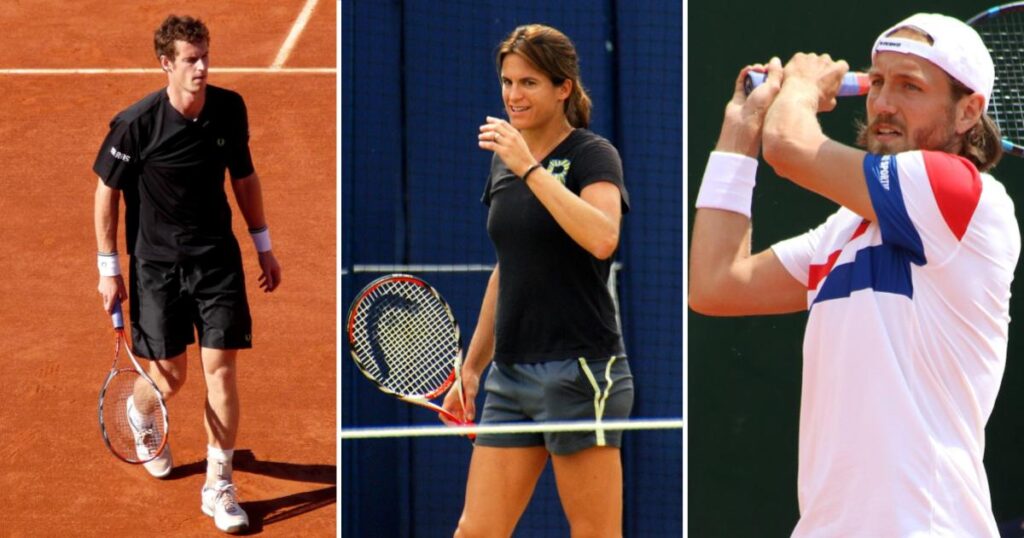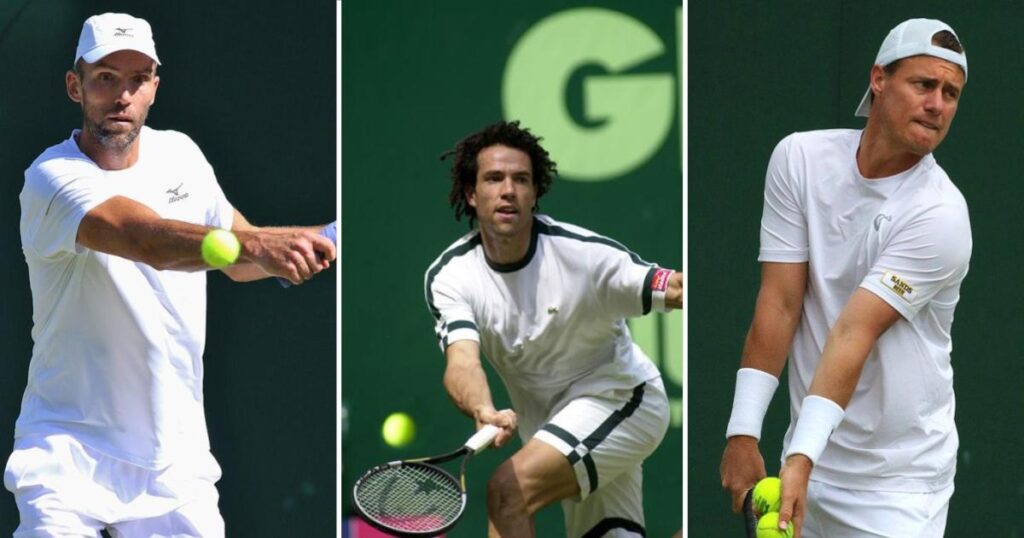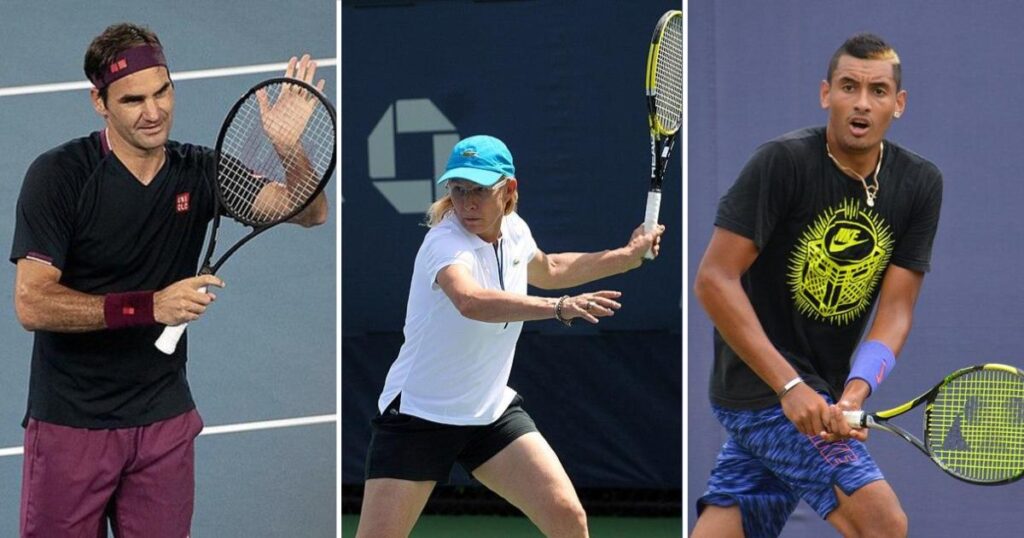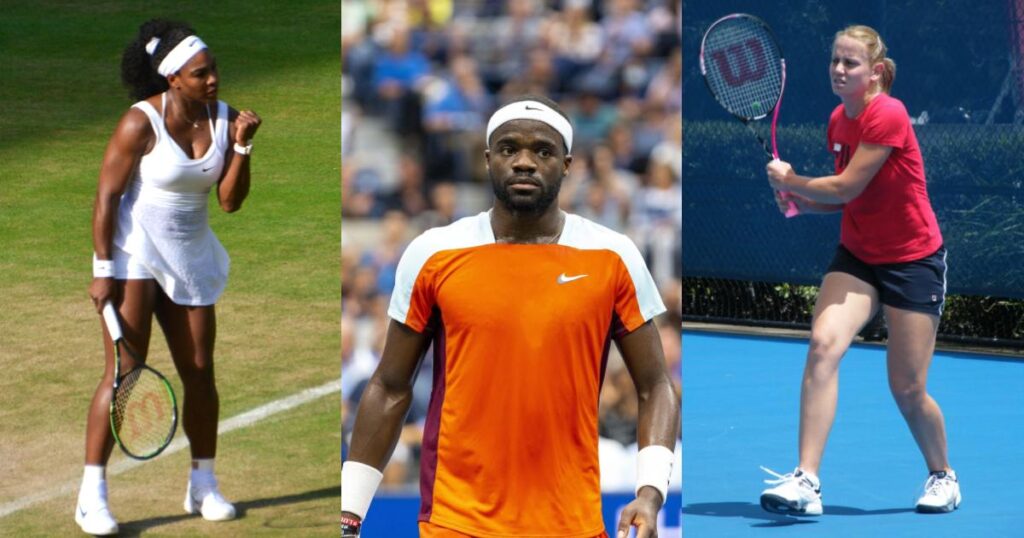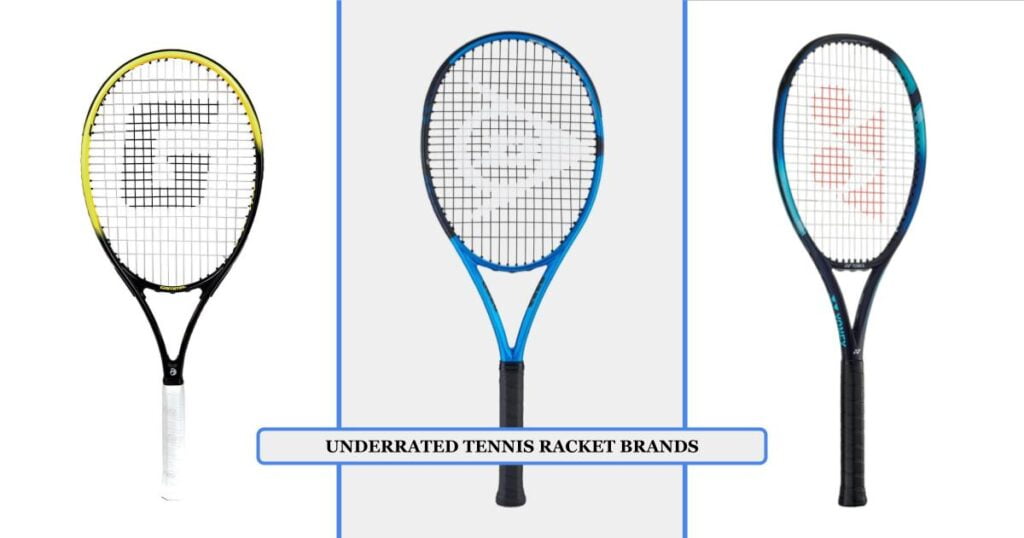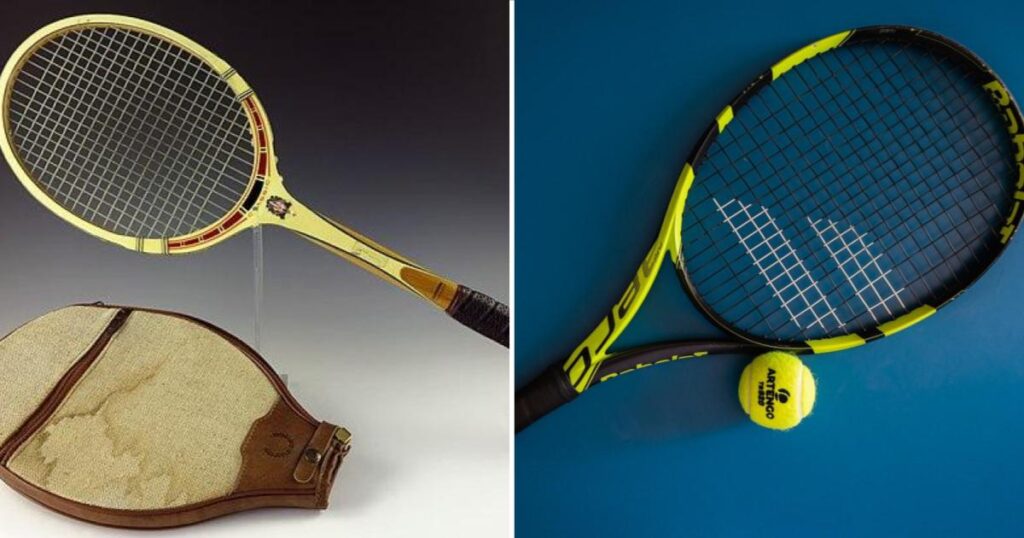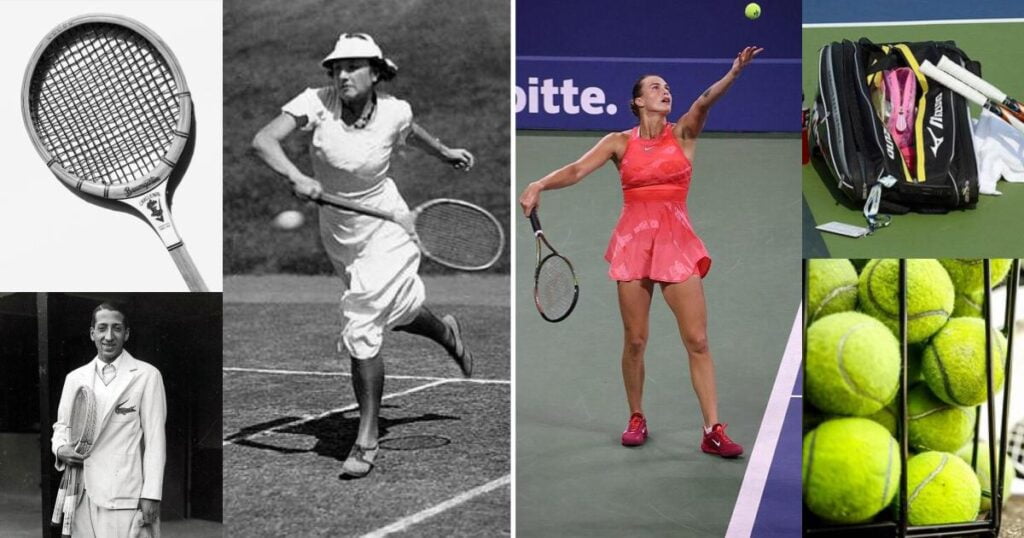If we look at the coaches of both male and female tennis players, we will find that men are the leaders in the job of coaching, and their numbers are astonishingly greater than those of their female counterparts. Female coaches in men’s tennis are rare, but interestingly, their numbers on the WTA’s official roster are also a handful. There is a clear disparity between the coaches of professional male and female players. The scale is clearly tilted in favor of male coaches.
But every observation has exceptions, and the same rule applies to the influence of male tennis coaches in professional tennis. Throughout tennis’s rich history, we find many instances of male tennis players who, at the amateur or professional level, sought the assistance of female coaches, providing fans of the sport and players alike with a unique perspective on the game. They chose to be different and followed what they thought was right for themselves and their game.
In this post, we will examine some instances of players who have worked with female tennis players during their professional careers and incorporated their input at various stages of their careers.
Andy Murray

A member of the Big Four
Andy Murray’s fans insist that it has always been the Big Four, not the Big Three, when we talk about the most successful tennis players in the modern tennis era, and frankly, there is nothing much to argue about it. Andy Murray is one of the finest tennis players in history, and his accomplishments in the sport speak for themselves. Murray, who hails from Glasgow, Scotland, made his professional debut in 2005 at the age of 18.
Appointment of Amelie Mauresmo as his new coach

In mid-2014, Amelie Mauresmo was appointed as Andy Murray’s traveling coach. In a Sky Sports documentary called Driving Force, Murray explained his reasons for appointing Mauresmo as his next coach.
He stated that the idea of working with top former female tennis players came to his mind when he was discussing potential coaches for his next tenure with Australian coach Darren Cahill. Cahill suggested or rather asked him if he had considered female tennis players for the role of coach. Murray liked the idea very much, so he decided to go with it.
“I was talking to him [Darren Cahill] about potential coaches who could work with me, and he said what about some of the top former female players? To me, it was a bit of a no-brainer.” – Andy Murray
Murray’s performance during Mauresmo’s coaching stint –
Amélie Mauresmo stayed on as Andy Murray’s coach for two years, ending her coaching stint in 2016. Here are some of Murray’s notable achievements during that period:
- Reached the ATP World Tour Finals in 2014.
- Won the Davis Cup representing Great Britain in 2015.
- Finished the 2015 season ranked number 2 in the singles tournament.
- Won his second Wimbledon championship in 2016, defeating Milos Raonic.
- Won a gold medal in the 2016 Rio Olympics and became the first player to do so two consecutive times.
- Reached the highest ranking of No. 1 by virtue of winning the Paris Masters 2016 final against John Isner.
Coach Amelie Mauresmo, the former world no. 1
Amélie Mauresmo, a former French player, has many accolades to her name both as a player and a coach. She became the world’s No. 1 tennis player in 2004, the first French woman to do so since 1970. In 2006, she won both the Australian Open and Wimbledon finals, claiming two Grand Slam titles in the same year.
Before taking up Murray’s coaching job, Mauresmo also coached fellow French tennis player Michael Llodra for a short period during the 2010-11 season. On the women’s tennis side, she has worked with Victoria Azarenka and fellow French player Marion Bartoli.
From Murray’s performances, we can safely conclude that he fared well under the guidance of his coach, Mauresmo. This also shows us that the understanding between the player and their coach is what matters most, along with good communication. Everything else comes later.
Amélie Mauresmo has had a prolific career as a coach on the men’s side of tennis, working with several professional tennis players, including Lucas Pouille, who had specific reasons for onboarding her. We’ll explore that and more in our next point.
Lucas Pouille

A drop in ranking from world number 10 to the 30s
Lucas Pouille is a French professional tennis player who made his professional tennis debut in 2012 at the age of 18. He reached his career-high ATP singles ranking of world No. 10 in 2018, but his ranking dropped to 32 in the same year, one of the main reasons why Pouille appointed Mauresmo as his coach. Under Mauresmo’s coaching guidance, Pouille reached his first Grand Slam penultimate round in 2019 at the Australian Open.
Mauresmo took on the job of coaching Pouille in 2019, three years after her coaching assignment with Murray. The drop in ranking did not sit well with Pouille, as he experienced a lack of confidence on the court and felt like he was not able to enjoy playing tennis.
“I lost confidence, and then I was not enjoying so much being on court, being on tour. I didn’t really want to play tennis. I had to find my joy of being on court.” Pouille said in an interview with nytimes.com after convincing Mauresmo to be his coach.
In the 2018 Davis Cup, he met with Mauresmo, who was the captain of the French Davis Cup team, and approached her for the role of coach. Mauresmo accepted the job from the start of 2019 and had to resign from her role as captain of the French team.
“When we were talking to each other, it was this couple hours of talking that really had me thinking. He had me thinking that he’s ambitious, that he wants to do everything in order to be as good as possible.” – Mauresmo on her job as Pouille’s coach.
Pouille’s performance during the two years of Mauresmo’s coaching:
Pouille’s and Mauresmo’s partnership didn’t last long, as Pouille suffered a right arm injury. As a result, he had to end the 2019 season early and played only one match in 2020. Despite the early end to the season, he had a decent outing in the 2019 season. He won his first main draw match in the Australian Open. He reached the Grand Slam semi-final but unfortunately lost to Novak Djokovic.
Pouille won the title at the BNP Paribas Primrose Bordeaux tournament by defeating Mikael Ymer in two sets in the final. The tournament was played on clay courts and was part of the 2019 ATP Challenger Tour.
Amelie Mauresmo’s name is sure to be mentioned when discussing women coaches for male tennis players. Her years of experience as a professional player have given her an edge in her coaching assignments. The examples mentioned above surely attest to this.
Robin Haase

Robin Haase is a Dutch tennis player who made his debut in 2006 and reached his career-best singles ranking of No. 33 in 2012. During the 2016 season, he brought in former tennis player Kristie Boogert as his coach, who originally hails from the Netherlands.
Kristie Boogert as a coach

The reasons why Haase decided to go with a female coach were simply that he had known her for a long time and felt confident that Boogert was someone who would take up the job of coaching him. In an interview with Usatoday.com, Haase stated the following when asked about his decision:
“I’m working with her here because I trust her. I know she knows a lot about tennis.” – Robin Haase
A relatively short stint with Boogert as his coach
The partnership between Haase and Boogert as player and coach didn’t last long. In the same year, Haase appointed Raymond Knaap as coach, who stayed in the role for five years, ending in 2021.
An injury that resulted in retirement
Kristie Boogert retired from tennis at the age of 30 due to a prolonged elbow injury. During her career, she achieved her highest singles ranking of No. 29 at the age of 23.
Though Boogert’s stint as coach of Haase didn’t continue for any substantial period, Haase’s decision to get the assistance of a former female tennis player for the role of coach is commendable.
Mikhail Kukushkin

Mikhail Kukushkin is a Kazakh professional tennis player who made his professional debut in 2006. He reached a career-high singles ranking of No. 39 in 2019 and a career-high doubles ranking of No. 67 in 2020.
A coach turned life partner?
Anastasia Kukushkina, from Moscow, Russia, started coaching Mikhail Kukushkin in 2008. A former tennis player herself, she had previously coached for five years at a tennis club in Moscow. Anastasia remained Kukushkin’s coach for over a decade, ending her stint in 2018. During her coaching stint, the formal coach-athlete relationship between the two took a new turn when the couple decided to marry during the early days of Anastasia’s coaching career.
In an interview with the New Indian Express during the 2018 season, Kukushkin expressed his views on the topic of having a woman as a coach. He stated that gender should not be the criteria for deciding whether someone is suitable for the job of a coach, and that instead one should focus on whether that person is qualified and capable enough to handle the responsibility. “I don’t know why the tennis world doesn’t understand that a woman can be a good coach. My wife was a former player. She went to a sports university for becoming a coach. How many male coaches have that kind of education? Not many.” Kukushkin said in the interview.
Anastasia echoed the same view on appointing a female coach in the men’s tennis circuit. She emphasized that all that matters are the results, and that if one is getting those in one’s favor, then it does not matter who is fulfilling the duty.
“It doesn’t matter who your coach is. If you get the results, it doesn’t matter whether your coach is a man or a woman.” – Anastasia said in an interview with Independent.
Kukushkina’s performance under Anastasia’s coaching
- He won the St. Petersburg Open final against Mikhail Youzhny in two straight sets in 2010.
- Became the first player from Kazakhstan to reach the fourth round of the Australian Open in 2012.
- Reached his career-best ranking of 48 in singles competition in 2014.
One never knows when one will cross paths with a person with whom one will share the next beautiful years of life. A similar thing happened with Kukushkin and his then coach Anastasia, who met each other through tennis, a sport they were both passionate about. The same sport also became the reason for both of them to tie the knot.
Anastasia coached Kukushkina for over a decade, a considerable period of time. This shows that if you focus on the job and know the process, preparing for tournaments becomes easier. Coordination between athlete and coach plays a crucial role here.
Denis Istomin

Istomin, the player who “upset” Djokovic
Denis Istomin, born in 1986, is an Uzbek tennis player who played his first professional match in 2005. It took him seven years to reach his career-best rankings in both singles and doubles competitions, which he achieved in 2012, when he reached world No. 33 in singles and No. 59 in doubles. One of the best career highlights of Denis Istomin is his upset win over Novak Djokovic in the second round of the 2017 Australian Open. Djokovic was the world No. 1 at the time, making Istomin’s victory all the more impressive.
A mother is always a coach
Children learn so many things from their mothers, and those things remain with them throughout the lows and highs of life. For Istomin, his mother was not only his guiding force in life but also his coach in the game of tennis, even at the professional level. Klaudiya Istomina, Denis’s mother, began coaching her son even before his professional debut, and she continued to do so later. She was there when Istomin defeated Djokovic, and Istomin credited his mother for his fantastic achievement.
In an interview with USA Today after the match, Istomin shared his feelings about how having a family member as a support system helps and improves his game on the field, and how not having a regular coach saves him money. He said this on a lighter note.
“When your family is part of your team, it’s great. I was lucky that my mother is coaching me. The (other) good thing that I don’t need to pay the coach extra, you know. Everything to my mother.” – Denis Istomin
Istomin’s performance during the initial phase of his career –
- He entered the top 100 ranking for the first time in 2009, which opened doors for him to play in other Grand Slam tournaments.
- The following year, he improved his performance and reached the top 50.
- In 2015, won his first ATP title in singles at the Nottingham Championships final in England.
- Won a gold medal at the 2018 Asian Games.
Having a family member as your mentor provides a different kind of work environment compared to the usual setup of coaching. As an athlete, you get to work with someone who genuinely cares about your success and the process you follow, and who will remain with you through the ups and downs of a professional career. Having your mother in that role makes it even more special.
Denis Shapovalov

Another Denis with his mother as his coach?
Not only does Denis Shapovalov share his name with Denis Istomin, but he also coincidentally has his mother as his mentor and coach, similar to Istomin. Shapovalov has been coached by his mother since he was a child, and he continued to train with her even after his pro debut. Denis Shapovalov is a Canadian tennis player who made his debut during the 2015-16 season.
Within the first few years of his debut, he garnered appreciation from the tennis fraternity and fans. He reached his career-best ranking in singles competition of No. 10 in 2020. In the same year, he not only reached his highest world ranking in doubles but also his first Grand Slam Championship quarterfinal.
Tessa Shapovalova’s Tessa Tennis Academy
“When my mother played in the Soviet Union, she felt she didn’t have the opportunity to express her potential because of the money.” – Shapovalov on his mother’s struggles during her playing days. (source)
Tessa Shapovalova was a professional tennis player herself, and after her professional career, she started working as a tennis coach at a tennis academy in Canada. She began coaching her son Denis from an early age. Later, Tessa quit her day job and opened her own tennis academy, known as “Tessa Tennis.”
We generally seek exceptional cases at various junctures of life, and tennis players like Denis provide us exactly that. Examples like these make us believe in our instincts, because most of the time, even though we attempt to do things differently, we still think about the ifs and buts.
In tennis, having a female tennis coach for male athletes is an uncommon occurrence, with its own reasons. But it is reassuring that those who have them have done just fine.
Tim Mayotte
Tim Mayotte: One of the earliest players to work with a female coach
Tim Mayotte, a former American tennis player who made his professional debut in 1981 and played at the professional level for the next 11 years, won 12 singles titles during his pro career. He reached his best career ranking in singles competition in 1988, at number 7. Tim Mayotte is one of the few male players who worked with a female coach during the 1980s, none other than Billie Jean King, one of the greatest female tennis players in tennis history.
Billie Jean King: One of the first women to coach male tennis players

Billie Jean King founded the league World Team Tennis in 1974. It was a team-based format open to both men and women. During this time, King also began coaching male tennis players.
During the 1990s, Billie Jean King coached not only Mayotte but also Martina Navratilova, one of the finest players of that time. After appointing King as his coach, Mayotte expressed his views on working with female tennis coaches in an interview with the New York Times. He said that coaching is all about knowing what needs to be done, and that anyone who knows how to do that can fit the role, regardless of their gender.
“It’s ground-breaking in a way, because except for the Russian players, no men are being coached by women. To me that was never a question. If someone knows the game, they know the game. And it adds a nice element for me. There’s not so much ego involved.” – Tim Mayotte
Mayotte started working with King during the last years of his professional career. Though by that time, he had accomplished many accolades to his name, he believed that he had more potential than what he had realized, and that King was the person who could help him play to his full potential during those last crucial years of his career.
“He’s really never even gotten close to fulfilling his potential because his serve has always let him down. And when your technique breaks down your self-confidence goes.” – Billie Jean King’s analysis of Mayotte’s game.
Female coaches in men’s tennis were rare during the 1980s and the years around it. Except for a few countries like Russia, male tennis players rarely opted for female coaches. Even today, female coaches are few in number.
Andrei Chesnokov
Naumko had been guiding Chesnokov since he was 8 years old
Russian tennis player Andrei Chesnokov made his professional debut in 1985 at the age of 19. He was coached by Tatiana Naumko from the age of 8, and she continued to coach him throughout his professional career. During his illustrious 14-year career, Chesnokov achieved many accomplishments, and Naumko played a crucial role in helping him achieve them. Chesnokov reached his career-best ranking of No. 9 in 1991 and won seven titles, with a winning percentage of over 57%.
Tatiana Naumko’s coaching journey with Chesnokov
Although Tatiana Naumko never had the opportunity to play professional tennis, she fulfilled her passion for the sport by joining a tennis club in Russia. She coached schoolchildren at the club, and Chesnokov was one of her students during that time.
She remained his coach throughout his career, and neither of them was ever bothered by other people’s opinions about male tennis players being coached by a woman. In Naumko’s opinion, tennis is a sport that is the same for everyone, whether they are male or female. You see the ball, you hit the ball. It all comes down to that.
“I think with tennis, women’s and men’s is the same. You have an opponent and balls. You hit the balls, you find strengths and weaknesses. It’s the same for both.” – Tatiana Naumko
Chesnokov’s performance during Tatiana Naumko’s coaching tenure:
- In 1989, he reached the semifinals of the Grand Slam tournament at the French Open.
- In 1995, won the Davis Cup semi-final against Michael Stich in a five-set match with a 3-2 result.
- Named 7 singles tournament titles to his name, including two consecutive titles in Tennis Masters Series events in 1990 and 1991.
- 4 of his 7 title wins have come on clay, and the rest on hard court.
Tatiana Naumko, the coach of Andrei Chesnokov, had a life that is inspiring in many ways. Back in her day, she had a passion for tennis, but due to the socio-political situation in her region, she did not have the opportunity to take the sport to the next level and play professionally. However, that did not stop her from pursuing her love of tennis. She decided to work in a tennis club so that she could stay close to the sport and help children pursue their dreams.
Danish Players Kenneth Carlsen and Kristian Pless
Kenneth Carlsen: one of Denmark’s best tennis players

Kenneth Carlsen, a former professional tennis player from Denmark, had a career spanning over 15 years, starting in 1992. Within his first two years of debut, he entered the top 100 players, ranking no. 41 in singles competition. During his professional career, Carlsen won three singles titles between 1998 and 2005. During his career, he received several “Player of the Year” awards from the Danish Tennis Federation.
Kristian Pless: World No. 1 junior player before turning pro

Although at the junior level, Pless had brilliant performances to his name, being ranked number one in the world at the time he turned pro. Somehow, he didn’t replicate the same success when he turned pro. Playing for Denmark, Pless debuted in professional tennis at the age of 18, a career that spanned over a decade.
In his professional career, he did not win any major singles titles, but he managed to rank among the top 100 players within the first 3 years after turning pro.
Both coached by Tine Scheuer-Larsen: One of the finest female tennis players from Denmark
When it comes to prominent female tennis players from Denmark, Tine Scheuer-Larsen’s name will always feature in that list. She holds a number of records, including being the youngest Danish player to win a title (at age 15) and the highest-ranked Danish player in 1986. Interestingly, both records include both male and female tennis players.
Scheuer-Larsen continued her tennis journey after retirement by transitioning from player to coach, and then to commentator. She coached fellow Danes Carlsen and Pless during various phases of their careers. She coached Kristian Pless for two years during his early days as a player.
Bobby Riggs

Riggs, a male tennis player, played against Billie Jean King
Anyone who has followed tennis and a little bit of its history knows Bobby Riggs for many reasons, one of the most notable being his match against King in 1973. Bobby Riggs, born in Los Angeles, California, made his amateur tennis debut in 1934 at the age of 16. He became the number one ranked amateur player in 1939. After playing amateur tennis for over eight years, he turned professional, a career that spanned over two decades. He won many titles throughout his career and is remembered for many memorable matches. His three Grand Slam wins and equal number of U.S. Pro Tennis Championships stand out the most.
He was coached by Eleanor Tennant, a US female tennis player
“I think he is a boring player, and always has been, because he is a baseline player. From the day he came to me in Los Angeles, a stumpy youngster of 12 with a beaten‐up old racquet, he simply would not use his overhead smash. He said he didn’t need it, and damned if he wasn’t right. He plays for the baseline, and that’s not the kind of tennis that lifts the gallery out of its seats.” – Eleanor Tennant
Tennant made the above comments in a 1973 interview with the New York Times at the age of 78. She was critically analyzing the game of one of her oldest students, Bobby Riggs, who was 55 at the time. Even in her old age, Tennant remained close to tennis, following it rigorously and remaining an astute student of the game.
Riggs got his tennis coaching from Tennant from a very young age, and she continued to coach him even during his amateur career. During her coaching years, Tennant also coached many other well-known female tennis players. Tennant will be remembered in tennis history as the first woman to play at the professional level.
With that last “serve,” we conclude this post, which taught us that when it comes to sports, the thing that matters least is who is performing a role, but how they are performing it. Obviously, we cannot ignore the fact that male tennis coaches have clearly been the preferred choice of both male and female tennis players. But tennis has evolved immensely throughout its history, and it will continue to do so in the future. This also means that we will see women in prominent positions at various levels in the sport, including coaching, in comparatively higher numbers.
Also see:
Tennis Players Who Defied Financial Obstacles and Made It Big
Famous Tennis Players Who Played Without a Coach
Tags: Tennis Insights
